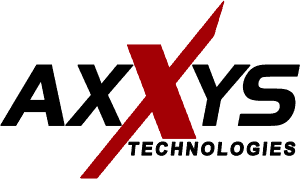One of your business’s most valuable assets is data, and ensuring its safety should be a top priority for your IT department. But what of the fact that there are so many different types of data nowadays? It seems like every few months there’s a new buzzword for the latest flavor, so it’s important that you get a taste of each new kind to ensure you’re up-to-date.
Data is the lifeblood of the information age. It gets observed, collected, organized, and analyzed, and it allows businesses to compete for profit and prosperity. And it takes many forms, each one unique and often vividly-named by the addition of a simple descriptive word.
As such, we thought a short glossary was in order to help keep you current on a handful of new data buzzwords and how they might impact your business.
Small Data
If “big data” is about powerful machines, huge databases, and sophisticated analytics, its little brother “small data” is about people. Small data takes a scaled-down approach to data mining that relies on things like social media to acquire important information. Archiving it is also simpler since a complex central data warehouse isn’t necessary.
Slow Data
The notion of “slow data” may seem a bit counterintuitive since processing ones and zeroes means things are happening fast. Some information, however, is actually acquired more slowly. Take, for example, the polar ice caps, where things literally move at a glacial pace. Since this kind of data doesn’t require frequent analysis it is suitable for back-up in its native format in a secure data lake.
Fast Data
We’re guessing you knew this buzzword was coming next, and it’s probably exactly what you thought it would be. “Fast data” refers to data events that happen fast – as in thousands of times per second – such as financial tickers or electrical sensors. Being able to act on it without delay is critical, so storing it immediately in a stable, easy to access location is a must.
Dark Data
Put simply, “dark data” is nothing more than day-to-day operational data that’s not getting used. It often refers to unanalyzed information in the form of customer call records, competitors’ price fluctuations, or website visitor trends. It can also include data that’s no longer accessible, such as when a storage device becomes obsolete. Your business can bring some of this redundant, out-of-date, or hidden data into the light with software designed to tidy things up.
Dirty Data
And speaking of tidying, here we finally have “dirty data.” While not quite as provocative as, say, dirty dancing or a dirty martini, it does have a tendency to arouse anxiety. But it’s actually not harmful to your data warehouse; it merely refers to a data set prior to its being “cleaned,” such as a leads list that contains duplicates, spelling mistakes, or formatting errors. The key is ensuring it gets spruced up before moving it into production.
If this index of buzzwords has left you wondering about the ways that different types of information affect your specific business, we’ve got answers. Setting up and managing your databases, super-secure backup strategies, and a thorough understanding of information technology are what we provide, so call or message us today.









